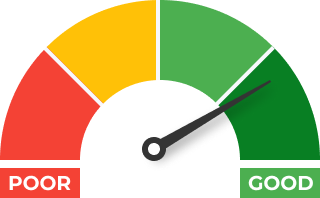There is a myriad of things you should pay attention to when opening a restaurant. Whether it’s the size of your menu, the price of the venue, or labor expenses – it all has to be accounted for before you actually open the doors to the public. On top of that, the second most important thing you should think about is how and when you will break even, return your investment, and start making a profit.
As with all other financial analysis, calculating the break-even point is easier said than done. There are a couple of factors you should consider, and use in your favor, before coming up with a definitive answer and a relatively precise timeline.
Here are some of the things you can do in order to conduct a proper restaurant break-even analysis:
Calculating Variable Costs
Variable costs represent the expenditures that change in direct proportion to the change in production, especially when it comes to raw materials and labor. In simpler terms, this concept takes into consideration the cost of supplies, disposables, food, ingredients, credit card fees, dishwasher soap, containers, etc.
This is a pretty simple step for already established businesses, but it can be quite a nuisance for newly opened ones due to the lack of information such as average sales per month, number of monthly visitors, etc.
In order to come up with a relative result, you’ll have to extract essential data and come up with the averages (visitors/sales). Once you have this variable solved, it’s time for the next step.

Calculating Fixed Costs
Fixed costs refer to costs that have no change related to production within a relevant range. This means your restaurant will have a variety of fixed costs over the course of a month which you have to account for in order to find the break-even point of your restaurant.
These costs include rent, insurance, advertising, taxes, utility bills, and everything else that doesn’t depend on sheer production and efficiency. The simplest way to look at it is as a certain amount of money you’ll have to spend no matter how successful or unsuccessful your month has been.
Calculating the Break-Even Point with a Simple Formula
Now that we have the two most important pieces of information (variable and fixed values), we can use a relatively simple formula and calculate the break-even point.
The formula is as follows:
BE= TFCARG-VCG
Where TFC is Total Fixed Costs, ARG is Average revenue per guest, and VCG is Variable cost per guest.
This formula calculates the point of how many units sold will your business break even. However, it’s not always easy to extract, especially if you lack the variable cost per guest factor.
Alternatively, you can use:
BE=TFC ÷ TS-TVCTS
Where TFC is Total Fixed Costs, TS is Total Sales, TVC is Total Variable Costs.
This formula allows you to get dollar (sales) values as long as you have fixed and variable costs determined.
While it may seem relatively complicated, calculating the break-even point isn’t exactly rocket science. The toughest part is getting all the necessary data and turning it into a single number. Bear in mind, the formulas we’ve used aren’t necessarily a mandatory part of the process but are definitely helpful and time-saving.
If you’re looking for absolute simplicity, you can divide fixed costs by the revenue per guest minus the variable expenses (formula 1.) On the other hand, if you’re aiming for a more detailed analysis, you’ll have to acquire more data and implement it into the equation.
You might also like:
- What Are the Most Important Restaurant Performance Metrics?
- How to Calculate and Reduce Overhead Costs in Your Restaurant?
- Average Bar Profit Margins And How To Maximize Yours

Business Insights With Glimpse

Glimpse provides business analytics and loss prevention technology for bars, restaurants and nightclubs.
Learn More








 +1 (786) 292-2373
+1 (786) 292-2373 insights@glimpsecorp.com
insights@glimpsecorp.com





